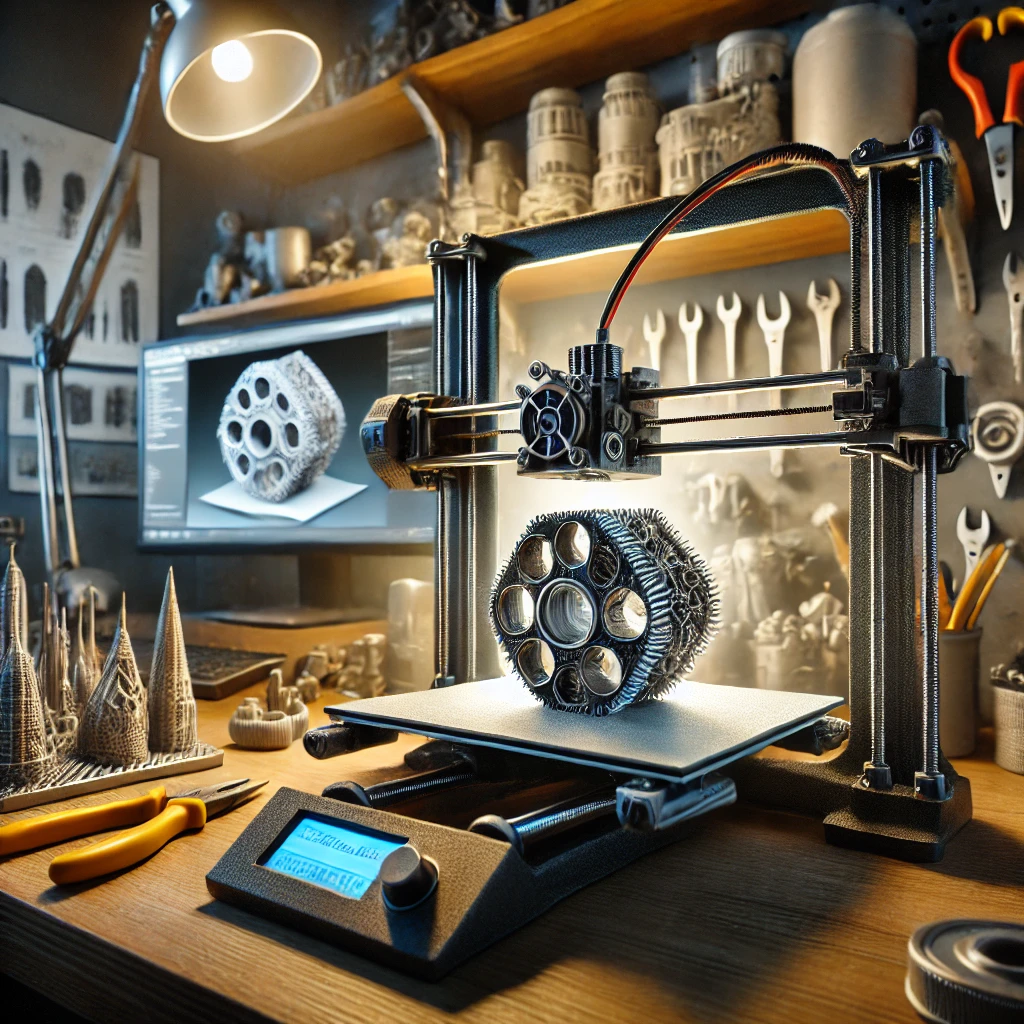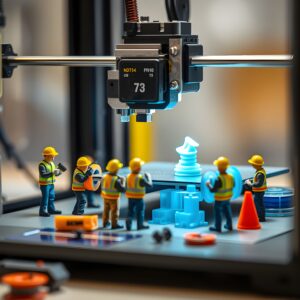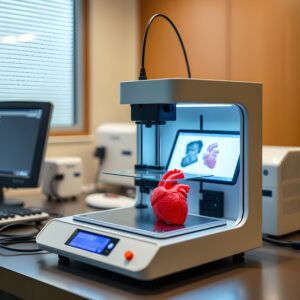The Rise of 3D Printed Gun Converters: Legal Implications

In recent years, technological advancements have made 3D printing more accessible and affordable, unlocking countless possibilities in industries such as manufacturing, healthcare, and education. However, these advancements come with unforeseen consequences, one of which is the rise of 3D-printed firearm components. Recently, a man faced serious charges after allegedly using 3D printing technology to manufacture gun converters—devices that can transform semi-automatic weapons into fully automatic firearms. This case has raised significant concerns regarding the intersection of emerging technologies and firearm legislation.
The Case: Understanding the Accusation
In this high-profile case, authorities allege that the accused used his 3D printer to create illegal firearm components. These gun converters, when attached to certain firearms, could transform them from semi-automatic to automatic, drastically increasing their firing capacity. Given the public safety risks associated with fully automatic weapons, the law regulates firearm modifications strictly. According to the Bureau of Alcohol, Tobacco, Firearms, and Explosives (ATF), producing or distributing such components without authorization is a federal offense in the United States. This case thus highlights both the potential for misuse of 3D printing technology and the necessity of adapting laws to accommodate emerging technological tools.
Firearm Conversion Devices: What Are They?
A firearm conversion device, often referred to as an “auto sear” or “switch,” can modify the firing mechanism of a semi-automatic gun, enabling it to release multiple rounds with a single trigger pull. This capability transforms the weapon into a fully automatic firearm, which falls under a different, more restrictive classification. The National Firearms Act (NFA) governs these types of firearms and tightly controls both their manufacture and sale, aiming to limit public access to these high-powered weapons.
The accused in this case is said to have printed and sold these conversion devices to various buyers. If true, this activity violates federal law, specifically the Gun Control Act of 1968 and the National Firearms Act. These regulations prohibit the unlicensed manufacturing and sale of firearm conversion devices, particularly those that can turn a firearm into an automatic weapon.
The Role of 3D Printing in Weapon Production
While 3D printing is widely lauded for its versatility and potential in legitimate fields, it also presents unique challenges when it comes to regulating firearm manufacturing. Using computer-aided design (CAD) files, hobbyists can produce complex and functional firearm components, bypassing traditional regulatory checks. The materials used, usually plastic, may lack the durability of factory-manufactured metal parts but are still capable of enabling a firearm to function as designed, posing serious risks.
Many online forums and marketplaces host CAD files for gun parts, including conversion devices, which complicates enforcement efforts. In the current case, authorities discovered digital traces of firearm-related CAD files on the accused’s devices, suggesting that he accessed or distributed these files.
Legal Implications of 3D-Printed Gun Converters
This case demonstrates the complex legal landscape surrounding 3D-printed firearms. Federal law prohibits the manufacturing of firearms without a license, and this includes firearm parts designed to enable fully automatic fire. Additionally, the possession, manufacturing, or transfer of any item or part designed to convert a firearm into an automatic weapon is strictly regulated. The ATF, which oversees firearm regulation, has the authority to prosecute individuals or businesses involved in the unauthorized manufacturing of these parts.
A critical concern for legislators is the dissemination of CAD files for these devices. While laws target the physical creation and sale of illegal firearm parts, the legal framework governing digital files remains less clear. Several jurisdictions are now exploring legislation to curb the sharing of CAD files related to weapon manufacturing.
Law Enforcement Challenges and Responses
The increasing accessibility of 3D printing has brought new enforcement challenges. Traditional firearms come with serial numbers that enable tracking; however, parts created on 3D printers lack these identifiers. This anonymity creates hurdles for law enforcement in tracing parts back to their source.
The ATF has established partnerships with local law enforcement to address the rising trend of 3D-printed firearm components. They are also investing in technology to identify plastic firearm parts, including special scanners and training for officers. However, enforcement remains challenging due to the clandestine nature of 3D-printed firearms and the vast number of potential sources for CAD files online.
The Debate Between Innovation and Regulation
3D printing technology has sparked debate about the need to balance innovation with public safety. Proponents of unrestricted 3D printing argue that the technology promotes creative freedom and innovation, providing a low-cost way for entrepreneurs and hobbyists to bring ideas to life. They contend that strict regulations could stifle the technology’s potential benefits.
Conversely, advocates for regulation argue that some level of oversight is essential to protect public safety. Without restrictions, individuals can produce potentially dangerous items in their homes, complicating efforts to enforce existing laws. In this context, the accused’s case exemplifies the risks associated with unregulated access to 3D printing technology.
International Response to 3D-Printed Firearms
Other countries have also grappled with the challenges of regulating 3D-printed firearms. In the European Union, strict gun control laws mandate that any form of weapon production or modification is heavily regulated. Recently, the European Parliament recommended updating its regulations to address the emergence of 3D printing in firearm manufacturing. Similarly, Japan and Australia impose rigorous restrictions on firearm production, including 3D-printed parts, reflecting a global trend toward stronger control measures.
The Future of 3D Printing and Firearm Legislation
As 3D printing technology evolves, experts anticipate more sophisticated methods of firearm production. This rapid advancement necessitates equally progressive legislative measures. Future laws may address both the digital and physical aspects of 3D-printed firearms, such as restricting access to CAD files of firearm parts or imposing stricter penalties on unlicensed 3D printing of weapons.
Some lawmakers advocate for a licensing framework where 3D printers must be registered, and users need permits to access firearm-related designs. Other suggested approaches include watermarking CAD files and enhancing digital traceability, which could aid law enforcement in tracking unauthorized files.
Conclusion
The case of the man accused of 3D printing gun converters underscores a pressing issue at the intersection of technology and law enforcement. As 3D printing technology continues to develop, society faces the challenge of balancing innovation with safety. While the benefits of 3D printing are undeniable, the potential misuse of this technology requires thoughtful regulatory approaches. For lawmakers and technologists alike, the task ahead is to ensure that technological advancement does not come at the cost of public safety.



